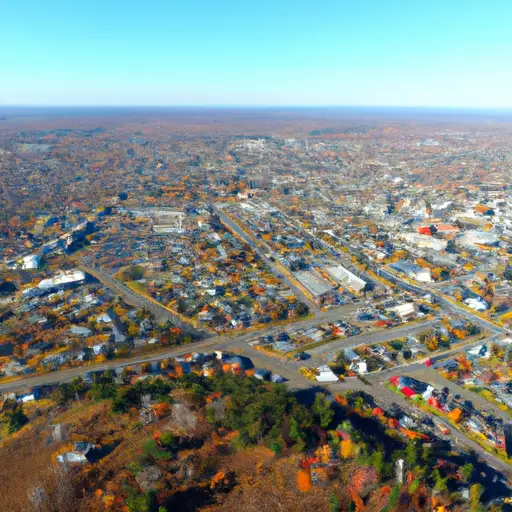Greater Sudbury : Interesting Facts, Famous Things & Information

- By
- Aparna Patel
- |
- 13 Jul, 2023
- |

Are you looking for interesting facts and famous things to do in Greater Sudbury? If so, you’re in the right place! This blog post will provide you with a comprehensive overview of everything you need to know about Greater Sudbury, from interesting facts about the city to famous attractions and activities. We’ll also give you some insight into the local culture and geography of Greater Sudbury, as well as some useful information on where to stay and how to get around. So read on and get ready to explore this amazing city in Northern Ontario!
Table of Contents
History & Information About Greater Sudbury City
Greater Sudbury, legally the City of Greater Sudbury (French: Grand-Sudbury), is a city in Ontario, Canada. It is the largest city in Northern Ontario by population, and the 24th largest metropolitan area in Canada. It is geographically located in the province of Ontario and administratively located in the Sudbury District. It has a population of 161,531 as of the Canada 2016 Census. Formerly a town, it was re-incorporated as a city in 2001. In this capacity, it also serves as the seat of the Sudbury district of the same name. It has been included in the Census Metropolitan Area since 2006.
The city’s site shows evidence of Indigenous presence dating back about 12,000 years. Sudbury was later founded by European settlers in 1883 during the construction of the transcontinental railway. Its economy is largely based on natural resources and manufacturing. Sudbury is also home to a large Franco-Ontarian population. It is one of the cities in a region known as the Greater Golden Horseshoe. The city has a large immigrant population, with about 25% of the population foreign-born.
Interesting Facts About Greater Sudbury City
1. Although Greater Sudbury was officially founded in 2001, the area has a deep history as a trading and transit hub for Indigenous Peoples. The largest lake in the area, Ramsey Lake, was a meeting point for First Nations, Metis, and Inuit communities.
2. Greater Sudbury is among the world’s top five nickel producing cities, and the mining community sits atop one of the greatest nickel mining camps in the world.
3. The city contains about 30,000 lakes and islands, making it one of the most water-rich regions in all of Ontario.
4. Greater Sudbury is considered to be a bilingual city – English and French are both the official languages.
5. The city is home to the world’s first and only moonwalk, located in Bell Park.
- The Winnipeg Art Gallery : Interesting Facts, Information & Travel Guide
- Belleville : Interesting Facts, Famous Things & Information
What is Greater Sudbury known & Famous for
?
Greater Sudbury is an exciting mix of small towns and cities located in Northern Ontario. It is best known for its spectacular beauty and outdoor activities, such as camping, canoeing, fishing, skiing, and snowboarding. The area is also home to a wide variety of important mineral deposits and major mining companies. Greater Sudbury is well known for its mining heritage, its vibrant art and music scene, and its many festivals and events including the Greater Sudbury Rocks marathon, the Sudbury Jam Music Festival, and the Trans-Canada Trail Marathon. It was also famously declared “The Chromium Capital of the World” in 1951.
What Is It Like To Visit In Greater Sudbury City?
Greater Sudbury is a vibrant city located in Northeastern Ontario. It offers a wide range of activities and attractions, no matter what type of traveler you are. Things to do in Sudbury are endless, as it’s home to several urban parks, historic sites, excellent shopping, diverse local cuisine, and a variety of cultures and people. Visitors can explore Science North, its unique mining heritage, breathtaking scenery, outdoor trails, and many more. Sudbury also offers great nightlife; from live music venues to comedy shows and casual bars, the city has something for everyone. With endless come and go transportation, cycling routes, and outdoor activities, it’s easy to explore the city. Toronto is just 1.5 hours away and offers a great opportunity to combine a city and nature experience. Greater Sudbury is a great vacation destination for all ages and budgets.
Search Posts
Latest posts
-
4 Mar, 2024
Why would you wrap your luggage in plastic?
Popular posts
-
5 Mar, 2024
Why prohibit engine braking?
-
5 Mar, 2024
How to avoid drinking vodka?